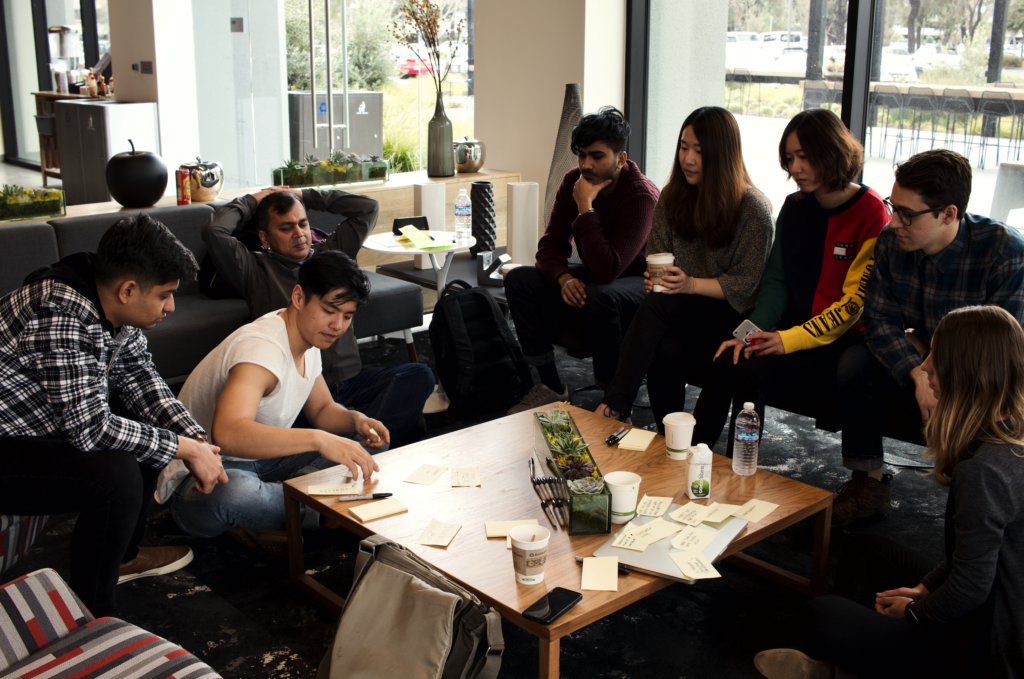
I had the honor of being a panelist at Vista’s UX conference in January. I got to meet some great folks from other Vista-owned companies. We had a grand ol’ time. The panel I was on was about addressing common designer issues. Marco Suarez from Invision was moderating the session. As a first time speaker of sorts, I was a bit nervous as the only individual contributor amongst three design leaders, and wasn’t quite sure what to expect.
The conversation-style session was going well — addressing issues such as retaining talent and resolving internal issues — and then Marco leads us into the next question.
“Dante…”
Oh, real quick — you ever been in a situation where you’re in a conversation and the best answer doesn’t come until afterwards? That’s exactly what happened to me.
So Marco says, “Dante, how do you maintain culture inside of your UX organization?”
Ah, frig.
“Well… culture… really is a balance of… what you allow… and don’t allow as an organization…mmmyeah, I don’t really have a good answer for this one”
I pass the mic to Mo Jennings, Director of UX at DealerSocket, and he takes it away with the cool outings he and his team have.
Ugh, cringe moment for me. But anyway, the rest of the talk went smoothly and that one question kept bothering me for the next few days. While yes, there is truth to the statement I made, I don’t think I did anyone any favors, so here we are.
Culture vs. Perks
Maintaining culture inside of your respective work groups. I’m old school, so the last time I led a group, culture wasn’t something actively chased after and developed. It was something that existed as a subculture organically, or was completely reflective of the culture at the C-level. The common string being that leadership is what can foster or devolve a culture.
The common thought at my panel was in the lane of maintaining culture through perks like good work from home policies, happy hours and ping pong tables. That’s great and all, but that’s just a byproduct of culture. I once worked at a design shop that had a merch fulfillment arm. There were all kinds of cool outings and perks, but it still didn’t stop someone from getting strangled on the job (who does that?!). That joint was on camera too. In short, the perks wont work unless the culture is good.
Maintaining Culture through Sense of Purpose, Inclusivity and Ownership
At Marketo, with new design leadership in place, our culture within the UX team has changed significantly for the better (big shout out to Manish Parekh). While we’re working on developing our design system, one thing we’re working on is establishing a good, solid statement of who we are. A credo, if you will, and it’s currently being drafted by myself, and the rest of the design team.
We’re taking a very inclusive approach to crafting this document, encouraging participation from everyone on the team. We’re creating the foundation of where we want our team to be. This will define how we operate, what we believe in as designers, and our design philosophy—how we roll as a group. What we stand for, and what we don’t stand for.
This document can then be passed down to new team members to maintain culture through this credo that we would live by. The level of enthusiasm we’re experiencing is very high, and it is palpable. This is a living document that can adjust with the times.
Hire Well and Validate through Strengths
With the recent changes in staff since the Vista acquisition (par for the course in any acquisition) we’ve rebuilt our team with truly bright and engaging folks that we hand-picked with intentionality; keeping in consideration how people could work together for our greater goal, and how they fit inside our team with our combinations of strengths and weaknesses. This (rightfully) gives each team member a sense of importance and makes them better suited to contribute their ideas. No one wants to work in a place that doesn’t recognize what they bring to the table.
Each team member brings something valuable. This is why you hired them. Acknowledge and encourage them. The more people share, the more we all learn. Constant elevation through education.
Maintaining Culture through Being Good Human Beings
True enough, any and many companies can be their own little cluster of madness. Some of that madness can be alleviated just from providing a good, honest and sincere and supportive environment that will allow people to feel free to dream and create. This requires a good degree of selflessness, and a genuine desire to see everyone flourish. This can be done through good leadership. Aneil Razvi, UX Department Manager of OmniTRACS touched on the idea of maintaining culture through gratitude. He first conducted a survey on what people appreciate. He had some team members working from home, and when they were exceptional, he’d have pizzas sent to their houses. Pretty dope. I feel like out of all of us, Aneil gave the closest to the best answer to Marco’s question because he dug deep enough to work with peoples motivations and rewarded them according to what motivated them.
Ok, so...
I’m not writing this to say that there is a one-size-fits-all approach to maintaining culture, but this is what we’ve done. I’m sure this will eventually need editing as we’re always looking to evolve our team and our own processes, and better ways to serve each other. Good leaders nurture positive behavior and thought, and discourage the opposite.
…maybe my answer to Marco’s question wasn’t so bad after all. The delta between what you allow and what you discourage will be the space that your culture lives in.



No Comments.